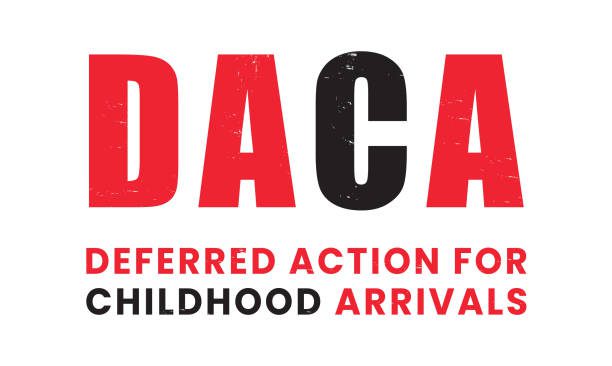Chestek Takes Challenge of USPTO Domicile Address Rule for Trademark Applicants to High Court
“The Federal Circuit’s ruling conflicts with the Supreme Court’s anti-superfluity canon of statutory construction… as it nullifies the entirety of subparagraph Section 2(b)(2)(B) enacted by the AIPA.”
On May 13, trademark law firm Chestek PLLC filed a petition for writ of certiorari asking the U.S. Supreme Court to take up a challenge to the U.S. Patent and Trademark Office’s (USPTO) promulgation of rules requiring trademark applicants to disclose their domicile address to the agency. According to Chestek’s petition, the Federal Circuit’s lower ruling improperly reads the agency’s notice-and-comment requirement for all general rulemaking out of the relevant statute, here resulting in the unwanted disclosure of sensitive personal information that could put certain trademark applicants at risk of stalking or abuse.
CAFC Ruling Eliminates Section 553’s Requirements Despite Statutory Cross-Reference
In 2019, the USPTO implemented a new policy requiring all trademark applicants and registrants to provide their domicile address in agency filings. Designed to improve the integrity of the U.S. trademark register, this rule arguably creates privacy concerns for many parties appearing before the agency, especially celebrities and victims of domestic abuse, two groups that are susceptible to stalking. The rule was implemented without notice-and-comment rulemaking as codified by the Administrative Procedures Act (APA) at 5 U.S.C. § 553. Chestek, which filed a trademark application for its legal practice, challenged the validity of the USPTO’s rule by listing a P.O. Box number in its application, which was ultimately rejected by the agency.
This February, the U.S. Court of Appeals for the Federal Circuit (CAFC) affirmed the agency’s refusal to register Chestek’s trademark for failure to list the applicant’s domicile address. In so holding, the appellate court found that the USPTO’s address rule for trademark applicants was not a substantive rule affecting how trademark examiners review applications but rather a procedural rule exempt from Section 553’s notice and comment requirements.
The agency’s final rule requiring domicile addresses from trademark applicants, published July 2019 in the Federal Register, claimed the agency’s authority under 35 U.S.C. § 2(b)(2) for issuing the final rule without notice-and-comment rulemaking, citing Cooper Technologies v. Dudas (2008) for additional support on that point. Chestek’s petition for writ argues that the Federal Circuit’s lower ruling improperly vitiates language added to Section 2(b)(2) by Congress through passage of the American Inventors Protection Act (AIPA) of 1999. Those amendments specified that rules governing agency proceedings and promulgated under that section’s authority would be made in accordance with the requirements of Section 553.
The Federal Circuit’s ruling conflicts with the Supreme Court’s anti-superfluity canon of statutory construction, Chestek’s petition argues, as it nullifies the entirety of subparagraph Section 2(b)(2)(B) enacted by the AIPA. The addition of this language “is so evidently designed to serve a concrete function,” namely to override the default inapplicability of Section 553’s notice and comment requirements for procedural rules promulgated under the USPTO’s Section 2(b)(2) authority.
Failure to Solicit Public Comment Left USPTO ‘Utterly Blind’ to Privacy Concerns
While challenges to procedural rules implemented by the USPTO are likely to only be heard by the Federal Circuit due to its jurisdiction over appeals from the agency’s trademark rulings, Chestek’s petition points out that other regional circuit courts have interpreted statutory cross-references to Section 553 as requiring notice-and-comment rulemaking in instances where that process wouldn’t ordinarily be required. On this point, Chestek’s petition cites the First Circuit’s ruling in Levesque v. Block (1983) and the Tenth Circuit’s ruling in Klaips v. Bergland (1983), both of which addressed requirements for notice-and-comment rulemaking within the context of the Food Stamp Act. While the Federal Circuit distinguished these cases as addressing subject matter exceptions to Section 553 instead of that statute’s procedural exceptions, Chestek contends that the Federal Circuit’s treatment of those cases recognized that notice-and-comment requirements under the Food Stamp Act were not negated by the statute’s cross-reference to Section 553.
“In other words, even if it were appropriate to hold that a cross-reference to section 553 incorporates some, but not all, of section 553’s exceptions to notice-and-comment rulemaking, it would be necessary to limit those exceptions to ones that would not categorically eliminate the obligation to observe notice-and-comment requirements.”
Without following notice-and-comment rulemaking requirements, Chestek argues that the USPTO was “utterly blind to the serious privacy concerns raised” by promulgation of the domicile address rule for trademark applicants. Had notice and comment procedures been followed by the agency, commenters could have alerted the USPTO to those potential consequences so that they would be properly addressed by the agency. Chestek argues that the present appeal is an ideal vehicle to resolve the question presented as the Federal Circuit’s jurisdiction over appeals from the USPTO could dissuade litigants from challenging trademark procedures given the lower rulings in this case.
Image Source: Deposit Photos
Author: isaac1112
Image ID: 672686174
Steve Brachmann
Steve Brachmann is a graduate of the University at Buffalo School of Law, having earned his Juris Doctor in May 2022 and served as the President of the Intellectual Property […see more]







